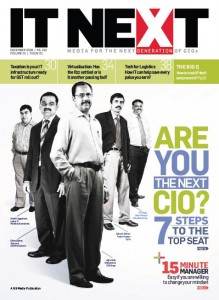Looking out from 25000+ feet
‘The mountains are Vishnu’s bones, clouds are the hairs on his head, the air is his breathing, rivers are his veins, trees are the hairs of his body, the sun and the moon are his two eyes and the passage of day and night is the moving of his eyelids.’
– Rig Veda
From the time when I boarded an aircraft over a decade ago, have been fascinated by the sights that one comes across from the tiny glass pane up in the sky. It is nothing less than magical to see giant bridges turn into tiny dots, long railways transform into an micro-toy trains and looming sky scrapers mere indentures on the landscape. Even after scores of trips over the Indian map and other ones, I still take the window seat and keep peeping out, as if there is something else that might just come up. Or it could be someone as well, like say, God. After all doesn’t he (she or even it) lives in the heavens. I have been keeping a watch out for him as well, because looking beneath at the wonderful creation that more or less fits on my palm, my belief in his existence is reaffirmed.
To-date, my most memorable journey was the one I took from Mumbai to Newark, non-stop. The American Airlines plane, to cut the route short, flies over Asia and Europe to the North Pole and then descends over the American hemisphere via Canada. I spent hours peering out in the darkness of the North Pole, could somehow feel the chill of the immense block of ice and the moon kept me company in the vigil. The fact that almost a century and more back there were so many valiant explorers who were racing to the find the North Pole to plant a flag. So many perished in the endeavour and so many just disappeared. And here I was their descendant, flying over the Pole in the comfort of a cosy cabin munching on cashews and sipping wine.
Here is one such journey I made, albeit much shorter and in daylight: from Mumbai to Delhi, on Indigo Flt 6E382. As I was looking out of the window as usual, random thoughts kept popping into my mind (as usual again), with a small difference though, this time I had a pen and paper on which I could jot down whatever came to my mind. This post is a chronicle of the same mind that was travelling at 100s of Kms per hour. Here it goes:
Mumbai to Delhi, on Indigo Flt 6E382. As I was looking out of the window as usual, random thoughts kept popping into my mind (as usual again), with a small difference though, this time I had a pen and paper on which I could jot down whatever came to my mind. This post is a chronicle of the same mind that was travelling at 100s of Kms per hour. Here it goes:
- The captain makes an announcement; “Welcome onboard, we are flying at 37000 feet . The place is near Ahmadabad. It almost seems like am flying over the Indian map. Continue reading
Uddhav: The Reluctant Tiger
Some are born great and some have greatness thrust upon them, goes the adage and Uddhav is a living testament to that. Till about 2002, little was known about Uddhav except that he liked photography and yes that he was the youngest son of the ‘remote control’ of one of the most vituperative Hindu leader. The bespectacled almost impish Uddhav preferred to do his bit, snap tigers in the wild, or shoot forts in Maharashtra from a helicopter.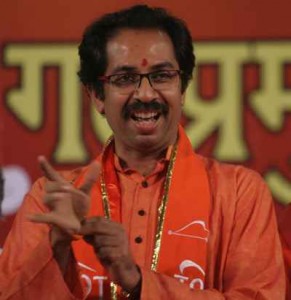 Uddhav, whose name means the brother of Krishna, was quiet happy to lead a non-descript life with his two sons. Since, he happened to be at the vortex of power, he could barely afford the privilege of a profession. So, he was content hosting his photo exhibitions now and then and living it out at his idyllic farm house in Karjat. Unlike his elder brothers, Jaidev and Binda, who were either spoilt by the allure of power or caught in a web of indulgences, Uddhav kept away from both politics and business. In a way, youngest Thackeray seemed to have inherited more from his mother Meena Thackeray, a warm and genile persona that shielded an iron will.
Uddhav, whose name means the brother of Krishna, was quiet happy to lead a non-descript life with his two sons. Since, he happened to be at the vortex of power, he could barely afford the privilege of a profession. So, he was content hosting his photo exhibitions now and then and living it out at his idyllic farm house in Karjat. Unlike his elder brothers, Jaidev and Binda, who were either spoilt by the allure of power or caught in a web of indulgences, Uddhav kept away from both politics and business. In a way, youngest Thackeray seemed to have inherited more from his mother Meena Thackeray, a warm and genile persona that shielded an iron will.
Yet, for all his desires to be away from the dust and grime of politics, he was destined for it. With the death of his brother Binda Thackeray in a car accident, his mother Meenatai in a cardiac arrest and relationship souring between Jaidev and senior Thackeray, his ageing father had no shoulder to lean on, except Uddhav’s. Though, there was indeed Uddhav’s cousin and Balasaheb’s nephew Raj, who had completely imbibed his uncle not only in the way he looked, but also the way he spoke, he thought and he reacted. Raj also had a keen business mind, and was not averse to using any means to achieve his ends. The Ramesh Kini murder case was an example, Raj was accused of threatening and subsequent murder of Ramesh Kini for a real estate deal. Raj over the years, under the aegis of Balasaheb had become the de-facto heir, whose anointment was just a matter of time. But destiny had other plans for him as well.
Twit Me Journalist
Blood oozed out profusely through Neda Agha-Soltan’s nose and mouth, as lay dying on the pavement. Within seconds of it, her eyes rolled to one side, and it was evident that life was ebbing out of her. The 26 year old, had been shot apparently by government militiamen as she was proceeding to join a pro-democracy protest against the alleged fraudulent victory of Mahmoud Ahmadinejad in the Iranian. Neda’s sad end was captured on a mobile phone by one of the onlookers, and uploaded on Youtube on the same day, i.e. June 20th 2009.
Within a few hours the short video clip had been viewed by millions across the globe, and over the next few days Neda became an emblem or rather a martyr to the cause of ‘the Green Revolution’ in Iran. Numerous websites spawned up paying tributes to her, bloggers furtively wrote in her memory, even the mainstream medium joined in, with the video clip being shown on CNN, BBC, etc. In a quirky way, Neda became the first celebrity of the citizen journalism, a method wherein information is created, disseminated and consumed by the laymen and not by journalists working in the media.
Yet the concept of citizen or participatory journalism is not a novel one, it has been around for quite some years. With the mainstream media turning into a pamphleteer of the rich and powerful and doing little about mundane issues that really matter to the common man. A new street journalism that was essentially “by the people” began to flourish facilitated by the emergence of the Web earlier and mobile later. The Web was the catalyst for the movement, as individuals with a web-connection and a point-of-view could now broadcast the same to the world at large. The new world was now populated by bloggers and writers who were furtively punching in stories, uploading video clips, etc.
Some years back I had met Oh Yeon-Ho, the founder of one the most popular citizen journalist portal, Ohmynews. When, I expressed my reservations on how untrained individuals could be dubbed as journalist and expected to create news content, Yeon-Ho assured me that it was well possible and quite required because the conventional media completely ignored the common man. “This is the common man showing his thumb to the mammoth news organizations that think he does not matter,” he had joked. Indeed, the whole edifice on which the 4th estate rested, namely, a controlled medium and a controlled message, was the danger of being swamped away in the new world, in which the consumer was also the creator. Continue reading
7 Steps to becoming the CIO
- Be business savvy
Mogambo; miss hua..
It has been 5 years since Hindi Film industry’s foremost villain, Amrish Puri left for the heavenly abode of Dongrila and Hindi films have never been the same again. He was the last ‘villain’ of Hindi movies and great one, by par. In these few years, his absence has been acutely felt by viewers of Hindi movies. The hero no more seems as heroic as he did in the past, simply because there is no villain who can tower over him. He was the epitome of villainy, who merely by his presence on-screen 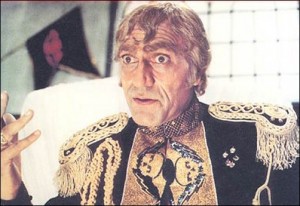 could repulse you or send a shiver down your spine. To be honest, he was the last of the great school of villains, that went long time into the past, having illustrious names like Pran, KN Singh, Kanhaiyalaal, Madan Puri, Amjad Khan, etc.
could repulse you or send a shiver down your spine. To be honest, he was the last of the great school of villains, that went long time into the past, having illustrious names like Pran, KN Singh, Kanhaiyalaal, Madan Puri, Amjad Khan, etc.
Let me illustrate this point with a personal example, sometime back while watching the film Ghazini, I realised the importance of a good villain in a film. Somehow, I could not sympathise with the character played by Aamir Khan, simply because the ‘bad guy’ did not seem to be menacing enough. He was bad alright, killing or maiming people like any other villains are expected to. But he was not evil, he was not sinister, he was not wicked. And therefore, the protagonist did not seem to be valiant and gallant. Now, imagine Amrish Puri in the role of Ghazini, the main villain and the contours change completely. Almost instinctively, you start to sympathise with hero even before the film starts that was the power of Amrish Puri.
The reason is fairly simple, unlike the West that tends to see the world in grey and color; we are brought up to see everything in Black and White. So, if it is not good, then it has to be bad, if not punya then paap. Even humans are bracketed into these slots, so if you are not a suputra (or suputri for that matter), you are definitely a kuputra (kuputri similarly). Our allegiance to the good is equally matched by our ambivalence of bad. And so we happily exist in this two-dimensional universe. Continue reading
Zewak: The search engine
The Best of the Web (courtesy Time)
Around this time every year, I eagerly wait for the annual specials from Time Magazine, be it the person of the year or the numerous other specials like the top 10 technologies of the year, top 10 films, etc. Dubbed as the ‘best and the worst lists’ they give a unique perspective on how the year has passed and what has been the high or the low points. But besides these, I really look forward to the world’s top websites listings. The reason is not all that hard to guess, because in it you will finds one of the best gems of human ingenuity, web ideas that were always there in the making except that no one did. This year’s list (www.time.com/time/specials/packages/completelist/0,29569,1918031,00.html) is no different, there are scores and scores of ideas that not only seem worthwhile (to use) but also great (to emulate). So here are a few chosen gems from the Time 50 list of best websites for 2009. If you desire more, log on to the Time site and check the complete list.
the Time site and check the complete list.
Idhant’s milestones
Raising a kid is like working on an amazing job; there might be loads and loads of fun, but at the end it is a job nonetheless. The difference is that you don’t get paid (on the contrary, you have to do so) and there is never a break from this one, no PLs, CLs, or sick leaves. There is never a time when you stop being a parent, and being on the edge becomes a habit or so. Suddenly, dust, mites, cold, fever, mosquitoes, et al become your enemies, while crocin, colimex become the trusted friends.
Are there any KRAs for the child rearing job? Of course, the difference being that they are called as milestones. These milestones usually turn into an obsession for many parents, as they do not want their ward to lag early in life. Continue reading
Interview: Dr RK Pachauri (IPCC)
“Is the climate change situation as dire as you make it sound?” Is invariably the first question that any interviewer puts to Dr. Rajendra Kumar Pachauri, chairman of the Intergovernmental Panel on Climate Change (IPCC) and the director general of The Energy and Resources Institute. Ever since 2007, when Pachauri came out with earth shattering commentary that our planet was moving rapidly towards an ecological disaster of gargantuan proportion, somewhat of an Eco-Armageddon and it was human activity that is responsible for the same; he has been hailed as a hero and reviled as a villain across the globe. Since, then Pachauri has been asked above question over and over again, and yet the environmental Nostradamus always answers the question calmly and lists down all the dangers that confront us in a solemn demeanor.
For western nations like the US that after years of releasing obnoxious pollutants in the atmosphere and wanting other nations like India and China to take a commitment first, Pachauri is a somewhat of a bogeyman. Nonetheless, he has taken a strong stance on what the world needs to do forestall the doom and how the developed countries should not merely shift the onus and blame to developing countries. In recognition of his efforts and those of IPCC, the Nobel Committee conferred on IPCC and Al Gore, the Nobel Peace Prize in 2007. In his acceptance speech on behalf of IPCC, Pachauri had invoked the Sanskrit adage, vasudev kutumbakam (the whole universe is one big family) and asked everyone to contribute to the fight against climate change.
Post Nobel, Pachauri turned into the most recognized face of climate change and he continues to invoke the same vasudev kutumbakam principle to ask all to join in the challenge. In a special discussion, he talks about the ways in which Indian corporate sector can play a significant role in battle, on CSS, nuclear energy and so many other things.
Whenever, we talk about climate change it is often from a macro perspective, namely what the governments can do on it. Do you think that at a micro level, say enterprises too have a certain amount of responsibility and can work towards a better world?
Indeed it is so. There is a whole range of things that companies and enterprises can do. The impacts of climate change are going to be very diverse, they are going to range from an increase in extreme climate events, to heat waves, drought, and also changes in precipitation pattern so the availability of natural resources like water is going to be definitely affected and it is going to impact on the working of the corporate sector. So companies need to start looking at how they need to adapt to these extreme events, for instance if there is an company that uses a large amount of water like a semiconductor fab; the water is not going to be available in the manner and to the magnitude they need in the future. So probably they need to think in terms of recycling of water, using processes that are less water intensive, etc. So these are adaptations measures that they can. And this will not only benefit the company but also go a long way in the fight against climate change.
What do you think about the eco-consciousness of the Indian corporate sector?
Well, it is growing, it is still not where it should be but I think the consciousness is growing. What is important is that there is desire to understand and to find out what they can do. But not all of them are not well informed on what the impact of climate changes are and how they should respond to it. I want to highlight the fact that the need to reduce the emission of green house gases (GHG) is also linked to energy supply because energy is going to be an issue that will affect countries, corporate entities, and even individual. The security of energy supply is certainly in question as far as the future is concerned. So to the extent that corporate sector can use energy more efficiently, perhaps to shift as much as possible to the use of renewable energy. There own security about the supply of energy will enhance. And while doing all that they will also be able to cut down on costs. They will have to carry out some due diligence, exactly define what they can do. The corporate sector in India needs to wake up to the challenge of climate change.
Right now, most of the green initiatives carried out by the corporate sector are clubbed under the CSR tag, what do you make of it?
You know, I think by and large a lot of corporate organizations treat CSR as a kind of a cosmetic effort. I don’t think that is the right spirit. CSR should be mainstream, after all if a company has to succeed it also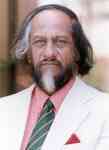 has to ensure that the society succeeds as well. And hence, for that to happen companies need to start looking at some of these initiatives as part of their overall operating strategy, not something that you do external to the enterprise. Hence, it is essential to integrate the two.
has to ensure that the society succeeds as well. And hence, for that to happen companies need to start looking at some of these initiatives as part of their overall operating strategy, not something that you do external to the enterprise. Hence, it is essential to integrate the two.
Due to your association with TERI, you have been privy to a lot of information about the various sectors of Indian industry; what do you think about the eco-consciousness of the IT industry vis-à-vis the rest of the sectors?
Some of the IT companies are indeed getting conscious of the fact, but I am not sure whether they are doing too much about it. Even if you look at some of the buildings that they construct, they have not really paid any attention by and large to energy efficient design, reducing energy in a way to make it sustainable in terms of supply opportunity in the future. And I am not too sure whether most of them are looking at even at the hardware and the software that they use being focused on energy efficiency. So I still think that there is a long way to go and I am not singling out the IT industry, every industry and enterprise needs to gear up for the challenge. Continue reading
Killed by Blackberry?
“Heard the latest? Ranjan Das is dead,” my friend Sudesh updated over GTalk. The bit of news numbed me, and for a moment I thought it must be some other Ranjan Das he might be referring to. Certaily not the Ranjan Das that I knew, the MD & CEO of SAP, who was young fighting-fit with a cherubic face. Amongst the many IT top guys that I knew, he was by far the fittest, Ranajajoy Punja (ex-cisco and now Vodafone) would come in second. I remember meeting Ranjan a few months back, the suave and genteel man seemed completely in control and excited to drive the German company’s revenues in India. In fact, SAP after many years had nominated an Indian for the top job (followed by Alan Sedghi) and Ranjan seemed to be the best man for it proved by the soaring revenues even as the economy took a dip. Hence, after a few anxious moments, I asked Sudesh “the SAP one?” To my dismay it was. And all that remained was a shock.
The reason for this profound effect was his age. At 42, Ranjan could be termed to be at his prime. He was physically fit, in fact he was returning from a session at the gym when the hands of fate stopped his 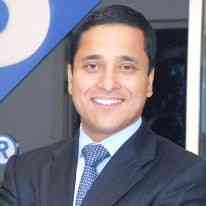 heart beat. Going by my own gait and girth, I for once would have been a more likely candidate for such an event in comparison to Ranjan. But then Ranjan is not the exception when it comes to a life snuffed out in the prime, in my own personal sphere I have come across numerous instances like Dewang & Sunil Mehta from Nasscom, Vivek Dayal from Mphasis, etc.
heart beat. Going by my own gait and girth, I for once would have been a more likely candidate for such an event in comparison to Ranjan. But then Ranjan is not the exception when it comes to a life snuffed out in the prime, in my own personal sphere I have come across numerous instances like Dewang & Sunil Mehta from Nasscom, Vivek Dayal from Mphasis, etc.
The one thing that is common to all these departed souls except for their relatively young age, is the fact that they all were involved in fairly high-profile work. All of these people including Ranjan were complete go-getters, always on the move, with set goals for the future and moving briskly towards them. The only thing a miss was that such work and lifestyle brings in tons and tons of stress with it. Somewhere their bodies could not keep pace with their ambitions and it gave up. Hard stress and not hard work killed them. Continue reading
Indian CIOs: A pampered lot?
Settling down for a cup of tea with a CIO friend of mine, the discussion veered about things in general and not so general. After glossing over issues like the elections in Maharashtra, water cuts in Mumbai, and Nobel for Prez Obama, the topic veered towards the various clubs et al. The clubbing bit was a trigger and my friend showed me an invitation that he (or another CIO friend of his) had received from reputed IT publishing group. The company was establishing a CIO club, and was soliciting advice on it.
The proposed club had almost all the features like the other CIO clubs, but it went a bit ahead. Namely, there will be family outings, tuitions and career guidance for kids, cookery classes and kitty parties for wives, caretakers for old parents, etc. In addition, there will be all those ‘exclusive’ conferences invites, the offsite events, etc. etc. Yet one of the most distinguishing features of the proposed club was the annual fee, a whopping Rs. 1,00,000 per annum.
With a rather obtusely open mouth, I asked my friend what he thought of the initiative and the annual fee. He smiled at me obliquely and responded; “why pay when you can have all this and more for free”.
Indeed, over the years that I have spent in the IT industry, one observation that has been reaffirmed time over time that among all the other top executives within an organization, the Chief Information Officer or CIO stands tall and is treated differently both within and outside the organization. It has been a long journey for the Indian CIO, often starting as an EDP manager in the days of yore and then going on to head a function that was at best considered to be a support one. Today, the IT department is critical glue that not only connects the disparate functions within the company but now is also a strategic one than can help in curtailing costs and gaining market share. As the weight age of the IT function zoomed over the years, so has the stock value of the CIO. Continue reading
considered to be a support one. Today, the IT department is critical glue that not only connects the disparate functions within the company but now is also a strategic one than can help in curtailing costs and gaining market share. As the weight age of the IT function zoomed over the years, so has the stock value of the CIO. Continue reading

